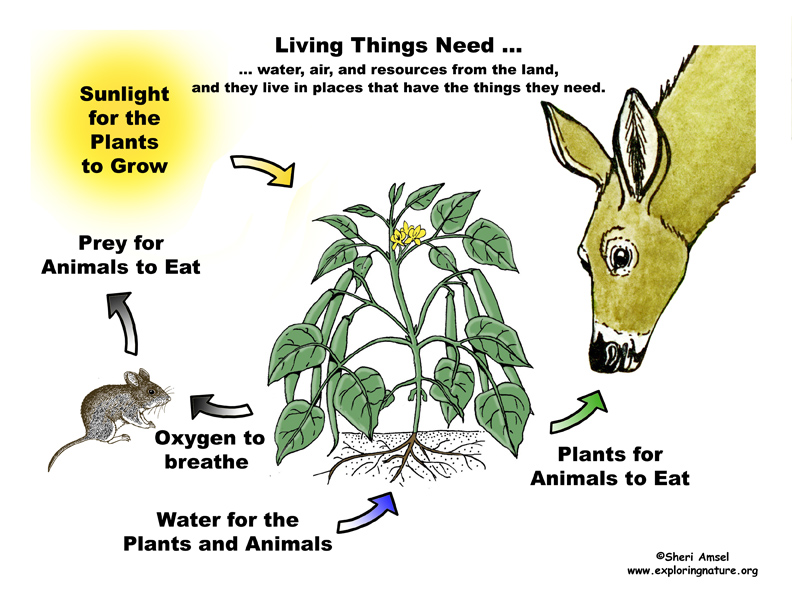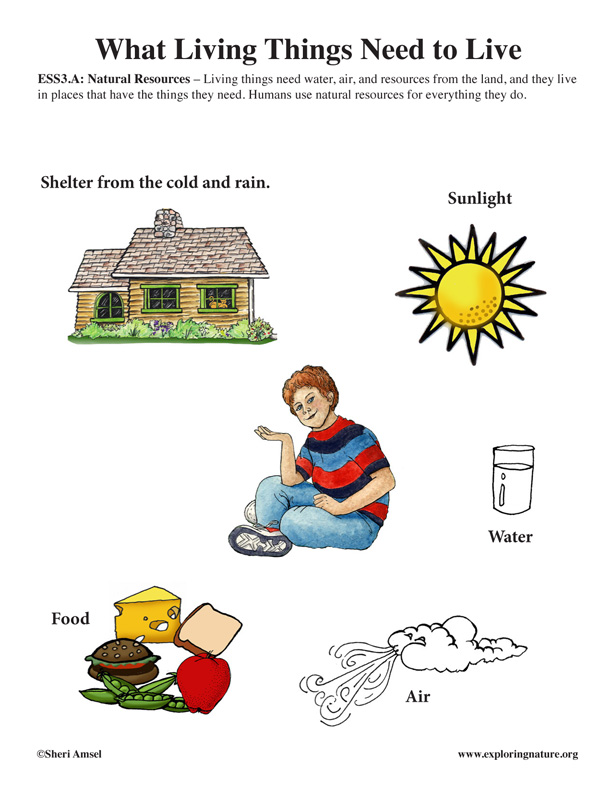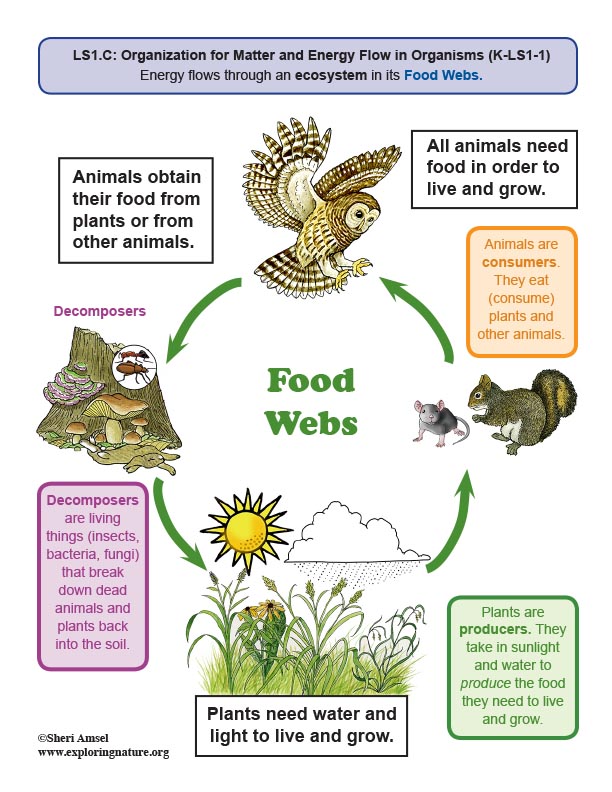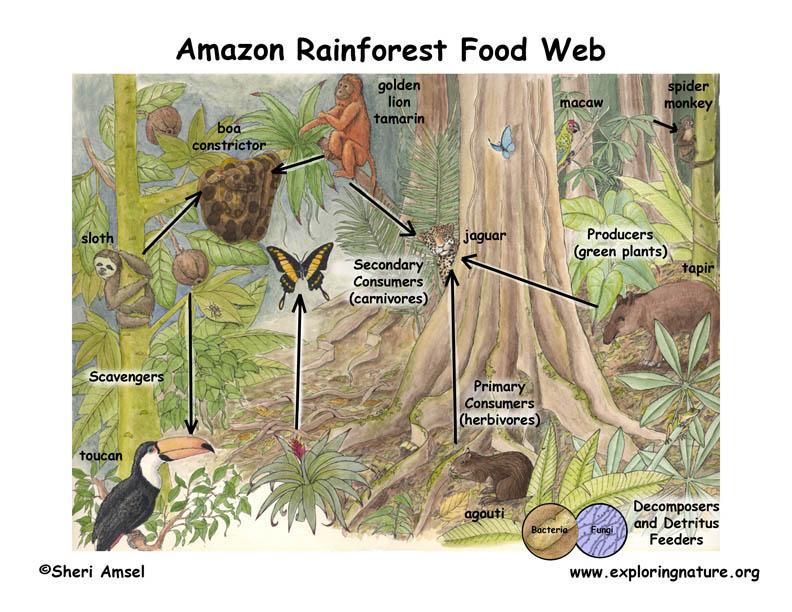

________________________________________________________________________________________________________________________________________________________
Disciplinary Core Ideas
LS1.C: Organization for Matter and Energy Flow in Organisms
• All animals need food in order to live and grow. They obtain their food from plants or from other animals. Plants need water and light to live and grow. (K-LS1-1)
Performance Expectations Students who demonstrate understanding can:
K-LS1-1. Use observations to describe patterns of what plants and animals (including humans) need to survive. [Clarification Statement: Examples of patterns could include that animals need to take in food but plants do not; the different kinds of food needed by different types of animals; the requirement of plants to have light; and, that all living things need water.]
_________________________________________________________________________________________________________________________________________________________
Use the Template and Resource Links to Fulfill NGSS
l. Goals:
Essential Questions:
ll. Introductory Activities to Assess Prior Knowledge
A. Simple Activities - that assess students’ understanding of what animals and plants need to live and grow.
What Do Living Things Need? Fill in The Blank
What Do Living Things Need - Matching
What Living Things Need - Labeling
All Animals Eat Food - Matching
Meat Eater or Plant Eater? Card Sorting
Animal Diets: Print-Copy-Cut-Paste
What Do I Eat? Match the Animal to its Food
African Grassland Food Web Puppet Show (Pre-K- Grade 2)
Food Web on the African Savannah - Critical Thinking
What Rainforest Animals Eat - Matching
What Desert Animals Eat - Matching
lll. New Knowledge - Text
A. Read to your students about what animals and plants need to eat to live and grow.
What Animals and Plants Need to Live and Grow - Read Aloud
B. Examples of Models (depicts the concept expressed in the reading):
Ask students to look at the models of what living things need and ask them about what they think they need to live.
Inquiry related to the plant's needs of water and air.
Parts of a Plant - Model Making Activity
What Plants Need to Grow - Investigation
Learning About Plants - Make a Terrarium
Photosynthesis - A Simple Experiment
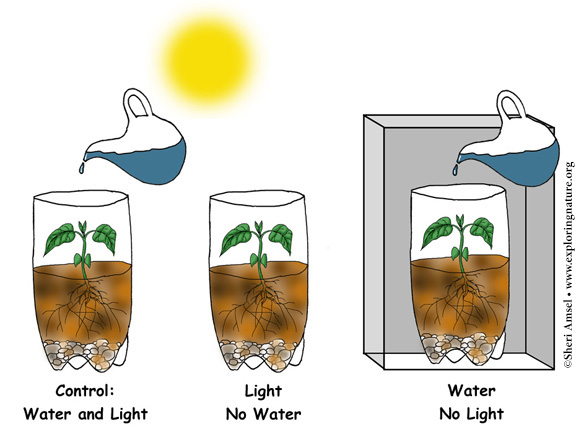
V. Summarize Knowledge - Enduring Understandings
Vl. New Generation of Science Standards (NGSS) - Kindergarten
Disciplinary Core Ideas
LS1.C: Organization for Matter and Energy Flow in Organisms
• All animals need food in order to live and grow. They obtain their food from plants or from other animals. Plants need water and light to live and grow. (K-LS1-1)
Science and Engineering Practices (NGSS)
Analyzing and Interpreting Data
Analyzing data in K–2 builds on prior experiences and progresses to collecting, recording, and sharing observations.
• Use observations (firsthand or from media) to describe patterns in the natural world in order to answer scientific questions. (K-LS1-1)
Connections to Nature of Science
Scientific Knowledge is Based on Empirical Evidence
• Scientists look for patterns and order when making observations about the world. (K-LS1-1)
Crosscutting Concepts (NGSS)
Patterns
• Patterns in the natural and human designed world can be observed and used as evidence. (K-LS1-1)
Performance Expectations
Students who demonstrate understanding can:
K-LS1-1. Use observations to describe patterns of what plants and animals (including humans) need to survive. [Clarification Statement: Examples of patterns could include that animals need to take in food but plants do not; the different kinds of food needed by different types of animals; the requirement of plants to have light; and, that all living things need water.]
Common Core State Standards Connections
ELA/Literacy
W.K.7 Participate in shared research and writing projects (e.g., explore a number of books by a favorite author and express opinions about them). (K-LS1-1)
Mathematics -
K.MD.A.2 Directly compare two objects with a measurable attribute in common, to see which object has “more of”/”less of” the attribute, and describe the difference. (K-LS1-1)
When you research information you must cite the reference. Citing for websites is different from citing from books, magazines and periodicals. The style of citing shown here is from the MLA Style Citations (Modern Language Association).
When citing a WEBSITE the general format is as follows.
Author Last Name, First Name(s). "Title: Subtitle of Part of Web Page, if appropriate." Title: Subtitle: Section of Page if appropriate. Sponsoring/Publishing Agency, If Given. Additional significant descriptive information. Date of Electronic Publication or other Date, such as Last Updated. Day Month Year of access < URL >.
Amsel, Sheri. "Kindergarten - K-LS1 From Molecules to Organisms: Structures and Processes" Exploring Nature Educational Resource ©2005-2024. December 13, 2024
< http://www.exploringnature.org/db/view/Kindergarten-K-LS1-From-Molecules-to-Organisms-Structures-and-Processes >

